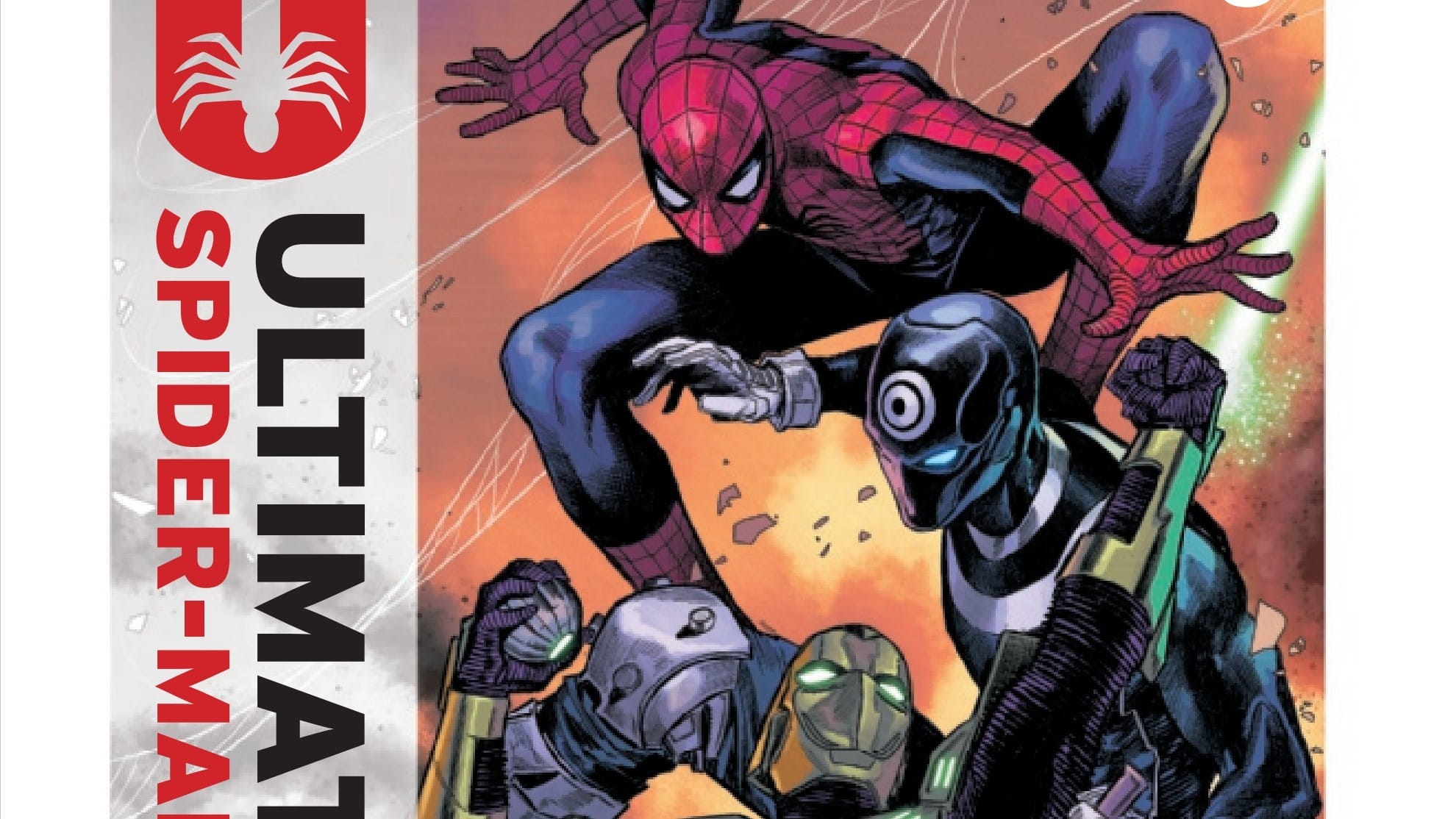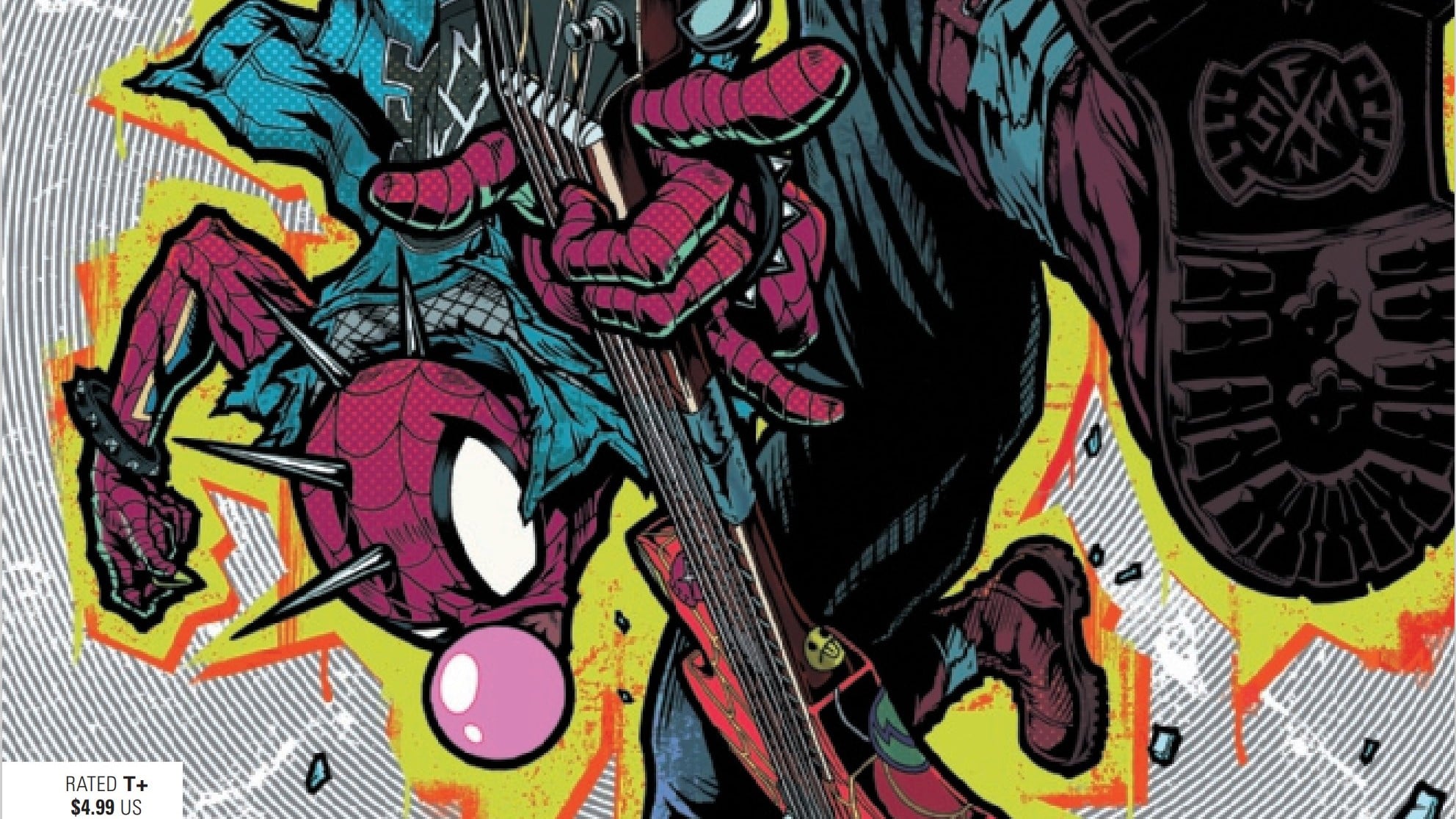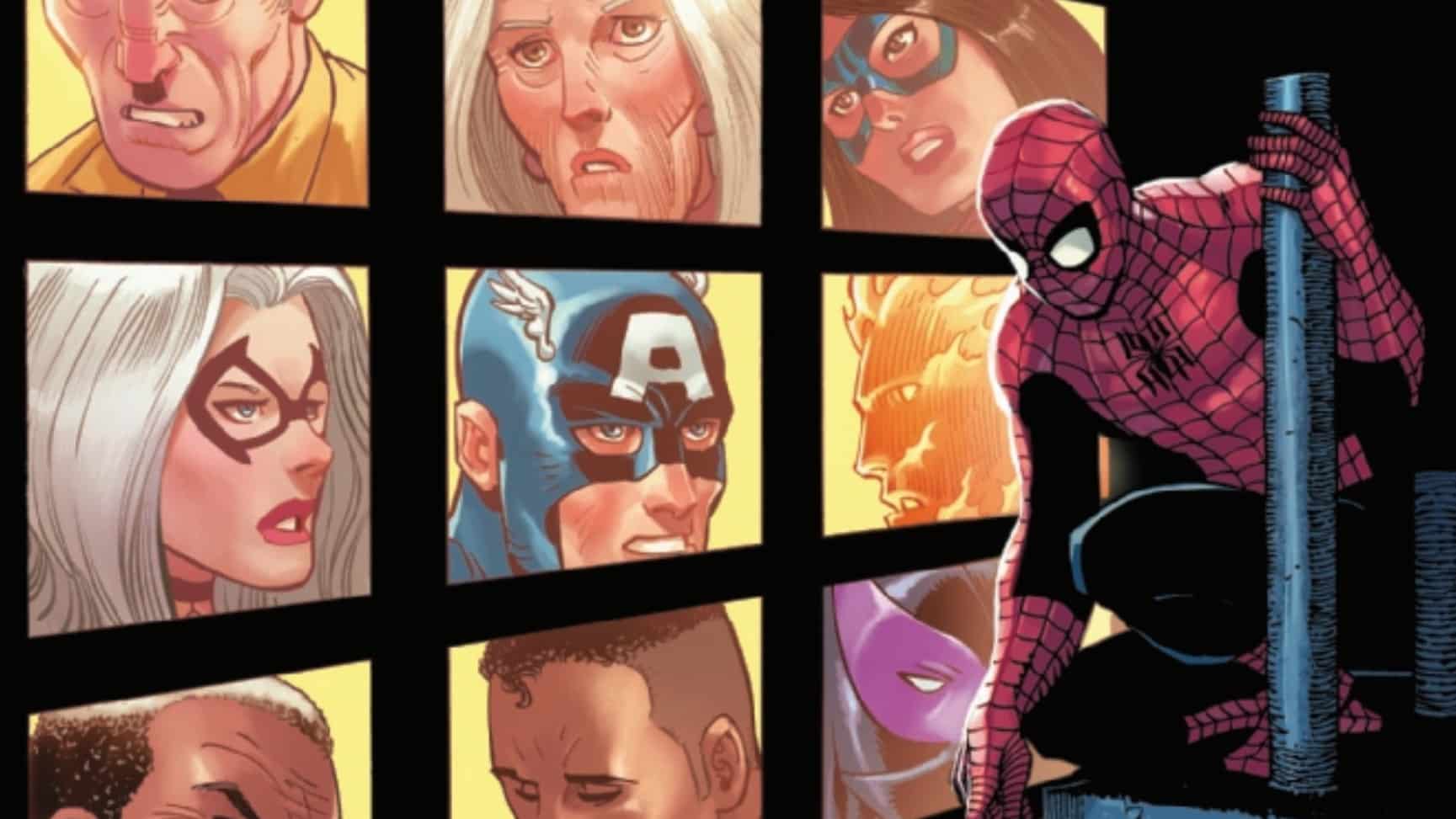There’s a tension in critique between judging a piece of work for what it is and judging that work against our internal monologue of what we think the actions and resolutions of the work should be. Honest, good critique does not degrade a work because it doesn’t live up to head-canon fan fiction; good critique understands what the work sets out to do and judges the work against that standard. Miles Morales: Spider-Man #34 aims to be a breezy, accessible, action-filled comic, toeing the line between decades of Spider-Lore and the bevy of new fans from the Spiderverse. This is fine. It’s admirable.
This is not, however, ambitious.
To be clear: work of limited ambition isn’t inherently bad. But it is a fair critique. And that tension – acknowledging what the work does well while observing, but not lamenting, what it doesn’t try – that frames my critique of Ahmed’s Miles Morales run.
This issue, Miles Morales: Spider-Man #34, is fine. I don’t mean that pejoratively: it’s literally fine. It’s linear. It’s clear. It’s direct. Miles and his clone (ugh) “brother” Shift have broken into the Assessor’s headquarters. The Assessor is the mysterious entity that tortured Miles (in one of the best issues of the run, by far) and created Shift, so both of our heroes are sufficiently motivated to attack.
And attack they do.
The two pencilers (Michele Bandini and Luigi Zagaria) and three inkers (Bandini, Zagaria, and Elisabetta D’Amico) create a cohesive, engaging work here. The action flows well (if, again, linearly); faces are expressive, muscles bulge. And yet while the characters look good, the locales are maybe a bit dour. We don’t really get a sense of scale around how massive the Assessor’s lair is from the inside, which I think is a missed opportunity. And, again, Miles’ haircut is a bowl cut, a common misstep other inkers of Miles (including other creators of color, specifically Black creators) are keen to avoid. David Curiel’s colors also feel a bit washed here, though, as I look back, this is no different than his work on the series. Maybe I just got used to it? Maybe I stopped noticing a whole back?
Maybe it doesn’t matter and I’m making a mountain out of a molehill?
Miles and Shift break through the physical and mental intimidation of the Assessor, only to finally face him and his Avatar/henchman, Quantum (who, I’m sure, when finally unmasked, will reveal a character we are already familiar with.) An antagonist whose raison d’etre is to continually push you past your limits, past points of exhaustion is an apt foe for a teen – think of your gym coach or that English teacher who would not stop riding you no matter how much you tried (no, not you if any of my old teachers are reading this.) We see Miles and Shift’s frustration and fury. The comic looks cool, it’s easy to pick up and understand, and the enemy is relatable.
And no, it’s not what I would do with the characters; it’s not how I would frame the action. My preferences aren’t the only parameters to create good work. However, inconsistent use of Miles’ journal as a narration device? That’s been a problem throughout the run. Lightening the tone of Miles’ interaction with the assessor from horror to mere comic action? That’s a missed opportunity that the comic has already effectively exploited. The characterization of Shift as Groot? That’s just unimaginative.
Thus my critique of Miles Morales: Spider-Man #34 – and of this run – is not that it’s not the comic I want; it’s that the comic too often misses opportunities to be the best version of the comic it wants to be. Good, breezy, linear fun is fine; good, breezy, linear fun is not easy to produce, and I really do respect making a popular character accessible, without loads of backstory or pretense; but good, breezy, linear fun does not absolve lazy tropes, missed opportunities, or, sadly, bad haircuts.
A proud New Orleanian living in the District of Columbia, Jude Jones is a professional thinker, amateur photographer, burgeoning runner and lover of Black culture, love and life. Magneto and Cyclops (and Killmonger) were right.
Find more of Jude’s writing here.






